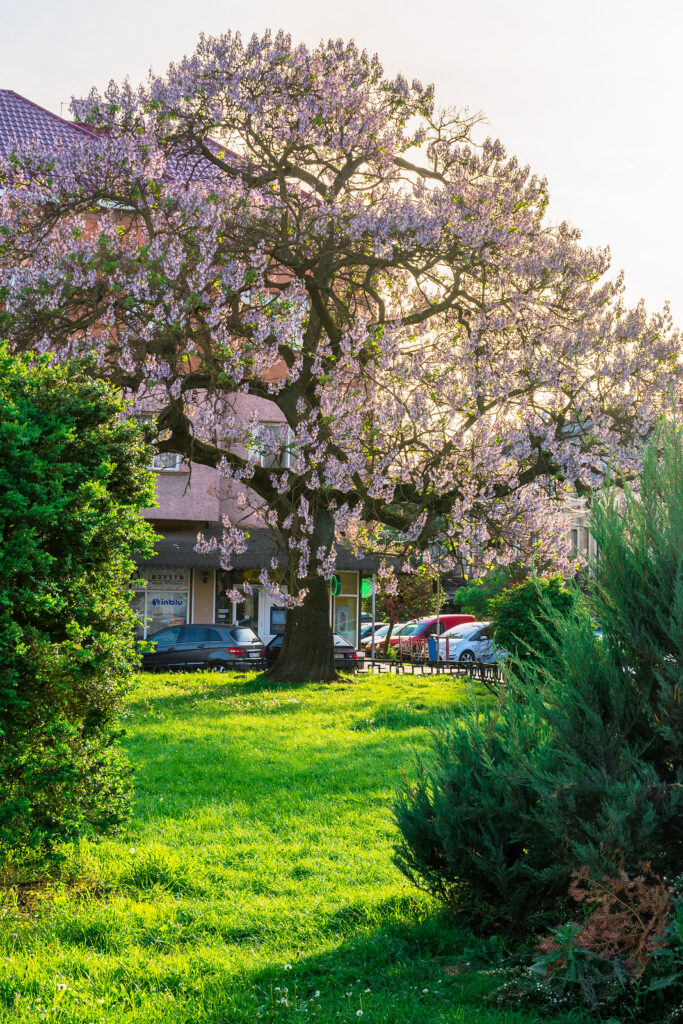Royal Paulownia is a rapidly growing deciduous tree. It is a member of a genus of Asiatic trees of the Figwort Family.
Paulownia has large leaves that resemble those of the catalpa with large erect clusters of beautiful fragrant violet, gloxinia-like flowers.
Paulownia grows to 40 feet tall. It is often planted as a specimen tree or as a street tree in mild climates. It can withstand salt air and is a good choice for seaside planting.
In cold-winter regions, Paulownia will die back to the ground, but the roots are hardy. In spring it sends up vigorous shoots covered with huge leaves.
Paulownia should be sheltered from wind. It grows best in light warm loam.
Paulownia can be propagated by seeds, greenwood cuttings, and root cuttings.

Get to know Royal Paulownia
- Plant type: Deciduous tree
- Growing Zones and range: 5-9
- Hardiness: Hardy
- Height and spread: To 40 feet (12m) tall and as wide
- Foliage: Coarse, very large opposite leaves may be entire or lobed, undersides are covered with down
- Flowers: Fragrant violet flowers borne in large pyramidal clusters
- Bloom time: Mid-spring
- Uses: Specimen tree
- Botanical name: Paulownia tomentosa
- Common name: Royal Paulownia, princess tree, empress tree
- Origin: China
Where to plant Royal Paulownia
- Grow Royal Paulownia in full sun.
- Royal Paulownia will grow in a variety of well-drained soils.
Planting and spacing Royal Paulownia
- Space Paulownia 30 to 40 feet apart.
How to water and feed Royal Paulownia
- Keep the soil evenly moist. Tolerates both dry and wet conditions.
- Fertilize Paulwnia by spreading aged compost to the dripline at least once a year.
Royal Paulownia care
- Train young trees to a single leader.
Royal Paulownia common problems
- Branches tend to be somewhat brittle.
- Flower buds may be killed by cold winter temperatures.
- Young plants may die back to the roots in cold climates
Royal Paulownia propagation
- Sow seed indoors in early spring.
- Take root cuttings in winter.
Royal Paulownia varieties to grow
- ‘Lilacina’ has pale flowers without spots.



